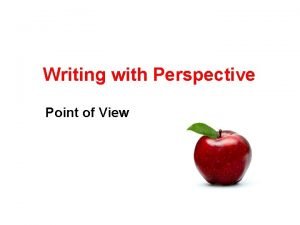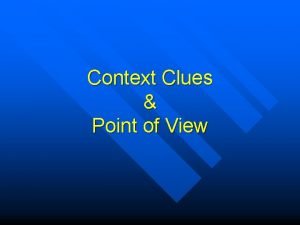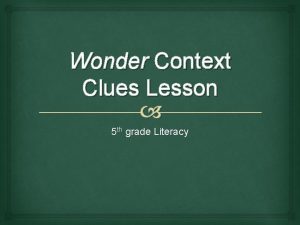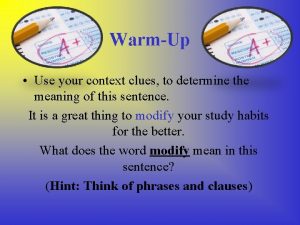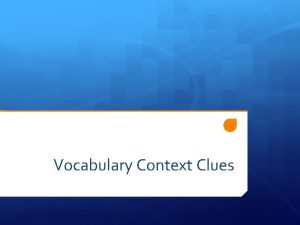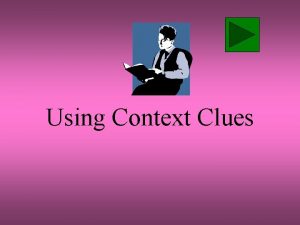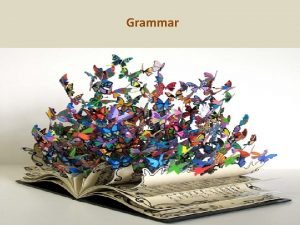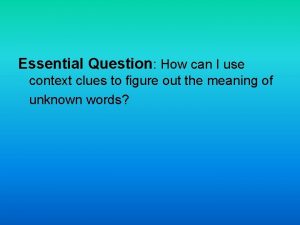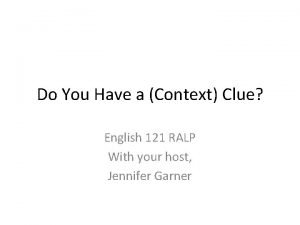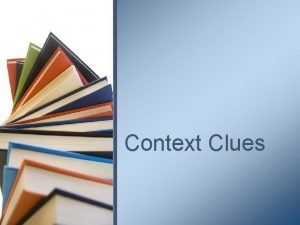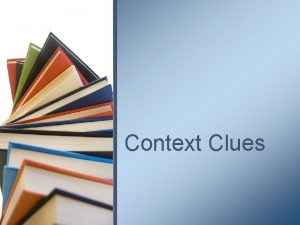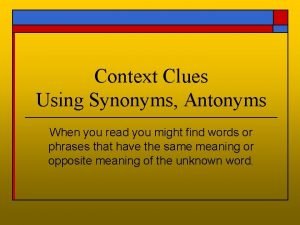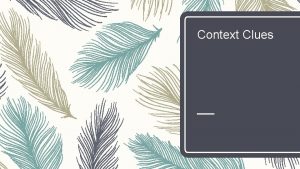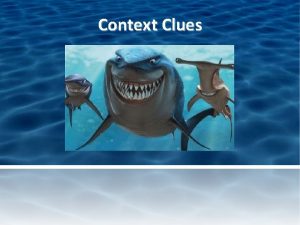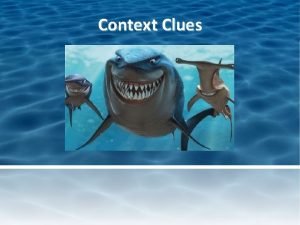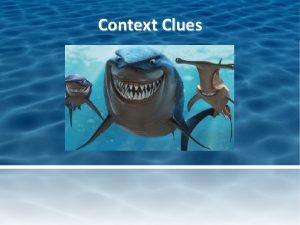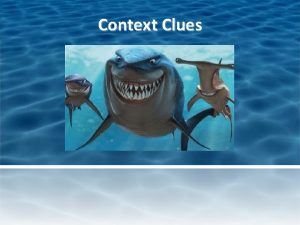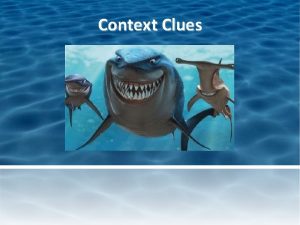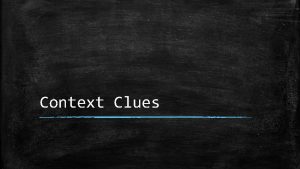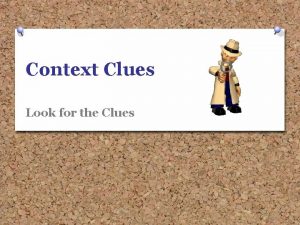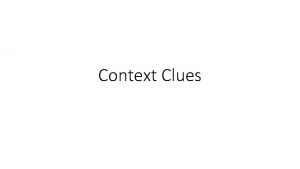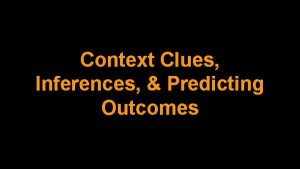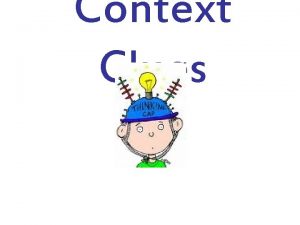Context Clues Point of View Context n Context















- Slides: 15

Context Clues & Point of View

Context n Context – The words and phrases surrounding a word – Can help a reader understand an unknown word

Context Clues n Context clues are the examples, descriptions, and other details in the text around an unfamiliar or unusual word or expression. n Re-read and read ahead to confirm the meaning of the word.

Context Clues

Context Clues n Use context clues to unlock the meaning of the unfamiliar word while reading.

Context Clues n Look for a word that might mean the same thing or have the opposite meaning of the unfamiliar word.

Context Clues n You may find definitions, examples, or descriptions of the unfamiliar word n Check the words in a dictionary after you read.

Point of View n Point of View is the perspective from which a fiction story is told. n Point of view affects what kinds of details are revealed to the reader.

First-Person Point of View n First-Person Point of View – The storyteller is a character who participates in the action of the story.

First-Person Point of View – The storyteller uses first-person pronouns I and me. – The storyteller can reveal only his or her own observations, thoughts and feelings.

Second-Person Point of View n Second-Person Point of View – The narrator is NOT a character in the story.

Second-Person Point of View – The narrator uses the second-person pronoun you. – Second person is a good choice when the author needs to give directions. – It's also good to use anytime the author wants to speak directly to the reader.

Third-Person Point of View n Third-Person Point of View – The narrator is NOT a character in the story.

Third-Person Point of View – The narrator uses third-person pronouns she, and they. – The narrator may know and reveal the observations, thoughts and feelings of more than one character.

Third-Person Point of View n Third-person Limited n Third-person – told from the point of view of someone not in the story. Third person limited does not let the narrator use I, we, or my. The action is told using he, she, it. The narrator only knows as much as the main character knows. Omniscient – means all-knowing. When the narrator in the point of view is omniscient (allknowing), he/she knows everything about the characters. The narrator knows what the characters do, know, and say.
 Clue words for third person point of view
Clue words for third person point of view Whats 3rd person limited
Whats 3rd person limited Boda-boda types of clues
Boda-boda types of clues Context clues lesson
Context clues lesson Context clues worksheets
Context clues worksheets Context clues warm up
Context clues warm up Context clues list
Context clues list Logic context clues examples
Logic context clues examples Signal words for synonym context clues
Signal words for synonym context clues Punctuation or font context clues examples
Punctuation or font context clues examples Context clues essential questions
Context clues essential questions English 121
English 121 Context clues objectives
Context clues objectives Six types of context clues
Six types of context clues Synonyms and antonyms context clues
Synonyms and antonyms context clues Context clues jeopardy
Context clues jeopardy
